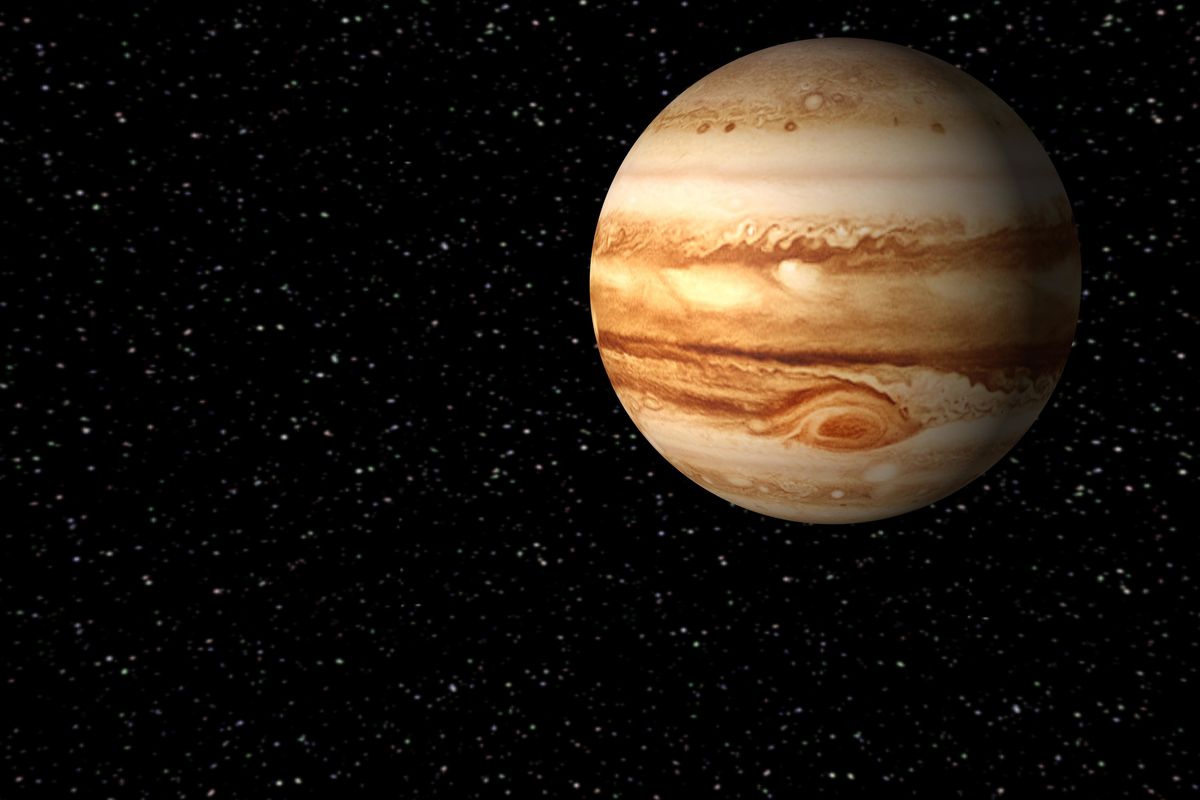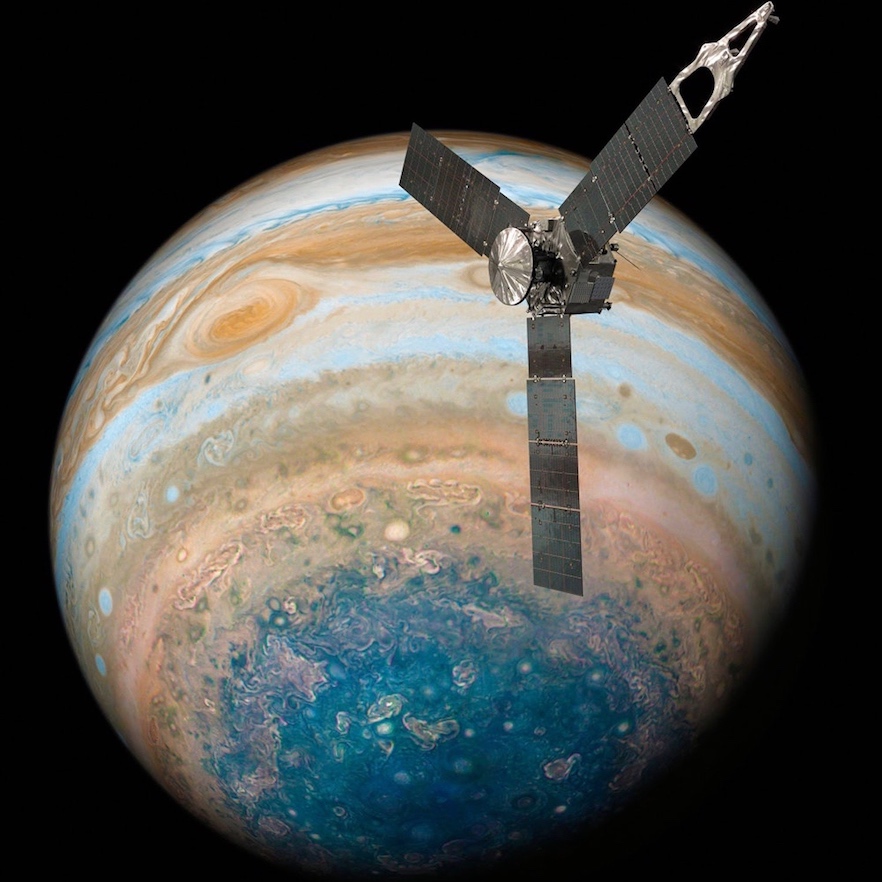Europa
Jupiter's ICy moon
Interesting Facts About Jupiter
#. Europa is slightly smaller than Earth’s Moon and barely one-quarter the diameter of Earth itself.
#. Europa orbits Jupiter, the fifth planet from the Sun. Jupiter orbits the Sun at a distance of about 484 million miles (778 million kilometers).
#. Europa rotates once on its axis and completes one orbit of Jupiter every 3.5 Earth days, so the same side of Europa always faces Jupiter.
#. Europa's surface is mostly solid water ice. It is crisscrossed by fractures.
#. Europa has no moons of its own.
#. Europa has no rings, but some moons in the solar system may have had rings in the past.
#. Europa has been visited by several spacecraft and more missions are planned.
#. Abundant liquid water, energy and the right chemical elements make Europa one of the best places in the solar system to seek present day life beyond Earth.
#. Europa's subsurface ocean might contain more than twice as much water as Earth
Explore in Silence
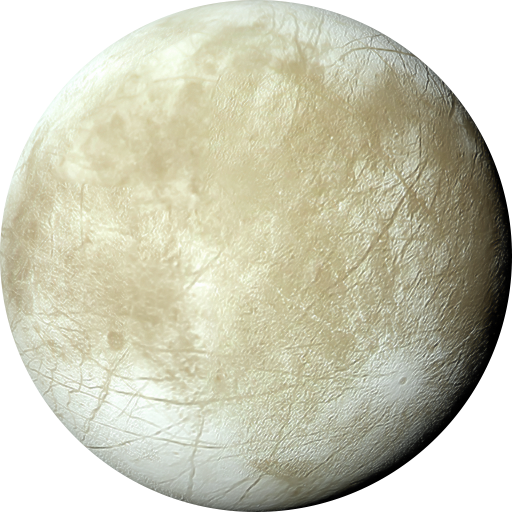
Europa, the fourth-largest moon of Jupiter, is a subject in both science fiction and scientific speculation for future human colonization. Europa's geophysical features, including a possible subglacial water ocean, make it a possibility that human life could be sustained on or beneath the surface. Jupiter is surrounded by dozens of moons. Jupiter also has several rings, but unlike the famous rings of Saturn, Jupiter’s rings are very faint and made of dust, not ice.
 Size and Distance
Size and Distance With an equatorial diameter of 1,940 miles (3,100 kilometers), Europa is about 90 percent the size of Earth’s Moon. So if we replaced our Moon with Europa, it would appear roughly the same size in the sky as our Moon does, but brighter — much, much brighter. Europa’s surface is made of water ice and so it reflects 5.5 times the sunlight than our Moon does.
Europa orbits Jupiter at about 417,000 miles (671,000 kilometers) from the planet, which itself orbits the Sun at a distance of roughly 500 million miles (780 million kilometers), or 5.2 astronomical units (AU). One AU is the distance from Earth to the Sun. Light from the Sun takes about 45 minutes to reach Europa. Because of the distance, sunlight is about 25 times fainter at Jupiter and Europa than at Earth.
 Atmosphere
Atmosphere Europa has a thin atmosphere mostly composed of oxygen and water vapor. The atmosphere is believed to come from radiolysis, rather than lifeforms as it does on Earth. There is also a weak but present ionosphere. Europa’s ionosphere could have come from the atmosphere’s interaction with Jupiter’s magnetosphere.
When determining a planet’s habitability, the presence of oxygen and other gases is considered. Therefore, the existence of an oxygen atmosphere reflects positively on Europa’s ability to sustain life.
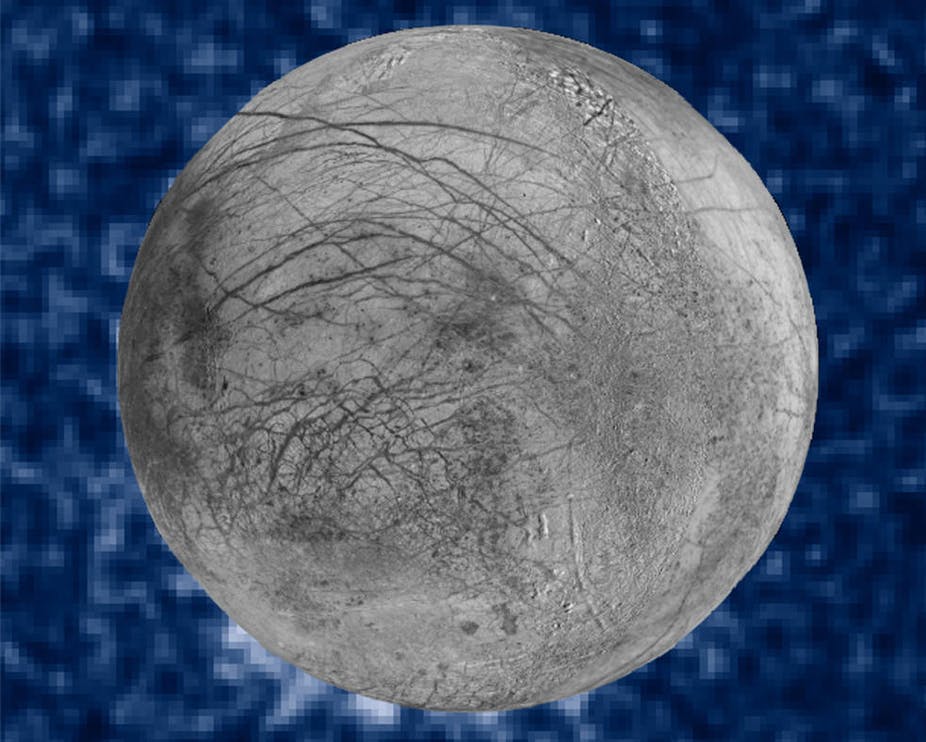 Subsurface Ocean
Subsurface Ocean On a flyby mission around Europa in 1979, Voyager 1 and Voyager 2 took relatively detailed photographs of the moon’s surface. They noted several important characteristics including dark streaks across the surface, or linaea, and an otherwise remarkably smooth icy crust. The linaea are believed to be the result of icy tectonic plates moving over a submerged ocean. Moreover, the smooth crust is believed to be the result of its recent formation. Submerged water may have risen to cover the older, more damaged surface and smooth it over. These surface features indicate the existence of a subsurface ocean. Given water's importance to life on Earth, it is considered to be a possible indicator of life on other celestial bodies.
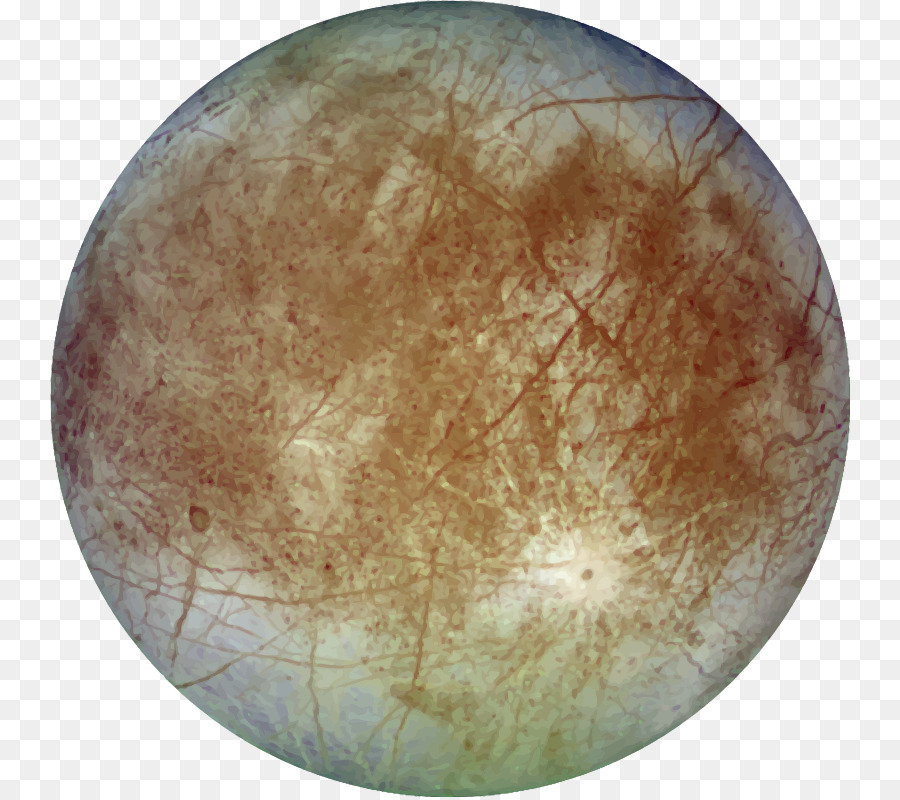 Environment
Environment The high radiation in Europa’s atmosphere is one of the environmental challenges to colonization. Europa receives 5.4 Sv (540 rem) of radiation per day, which is approximately 1,800 times the average annual dose experienced by a human on Earth at sea level. Humans exposed to this level of radiation for one day would have greater than a 50% mortality rate within 30 days. Another problem is that the surface temperature of Europa averages around 90K, or -330°F.
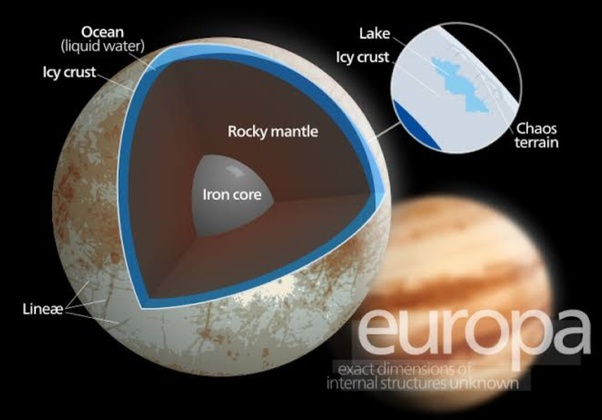 Structure
Structure Like our planet, Europa is thought to have an iron core, a rocky mantle and an ocean of salty water.
Unlike Earth, however, Europa’s ocean lies below a shell of ice probably 10 to 15 miles (15 to 25 kilometers) thick and has an estimated depth of 40 to 100 miles (60 to 150 kilometers). While evidence for an internal ocean is strong, its presence awaits confirmation by a future mission.
 Formation
Formation Jupiter’s large Galilean satellites (Io, Europa, Ganymede, and Callisto) likely formed out of leftover material after Jupiter condensed from the initial cloud of gas and dust surrounding the sun, early in the history of the solar system. Those four moons are likely about the same age as the rest of the solar system — about 4.5 billion years old.
In fact, the Galilean satellites are sometimes called a “mini solar system” since they formed from the leftovers of Jupiter similar to how Earth and other planets formed from gas and dust left over from the formation of our Sun. The similarities don’t end there. Each planet in the inner solar system is less dense than their inner neighbor — Mars is less dense than Earth, which is less dense than Venus, which is less dense than Mercury.
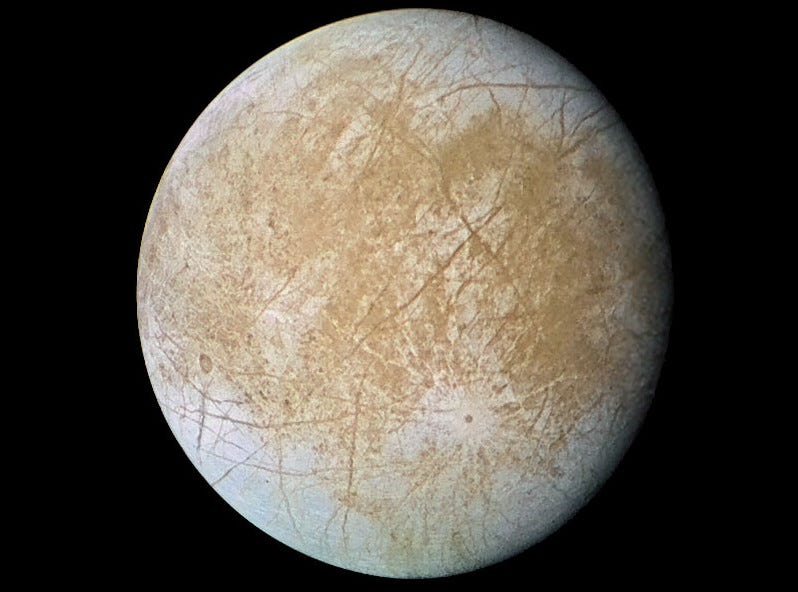 Surface
Surface Europa’s water-ice surface is crisscrossed by long, linear fractures. Based on the small number of observable craters, the surface of this moon appears to be no more than 40 to 90 million years old, which is youthful in geologic terms (the surface of Callisto, another of Jupiter’s moons, is estimated to be a few billion years old).
Along Europa's many fractures, and in splotchy patterns across its surface, is a reddish-brown material whose composition is not known for certain, but likely contains salts and sulfur compounds that have been mixed with the water ice and modified by radiation. This surface composition may hold clues to the moon's potential as a habitable world.
 Magnetosphere
Magnetosphere One of the most important measurements made by the Galileo mission showed how Jupiter's magnetic field was disrupted in the space around Europa.
The measurement strongly implied that a special type of magnetic field is being created (induced) within Europa by a deep layer of some electrically conductive fluid beneath the surface. Based on Europa's icy composition, scientists think the most likely material to create this magnetic signature is a global ocean of salty water, and this magnetic field result is still the best evidence we have for the existence of an ocean on Europa.
 Orbit
Orbit
Europa orbits Jupiter every 3.5 days and is locked by gravity to Jupiter, so the same hemisphere of the moon always faces the planet. Jupiter takes about 4,333 Earth days (or about 12 Earth years) to orbit the Sun (a Jovian year). Jupiter’s equator (and the orbital plane of its moons) are tilted with respect to Jupiter’s orbital path around the Sun by only 3 degrees (Earth is tilted 23.5 degrees).
This means Jupiter spins nearly upright so that the planet, as well as Europa and Jupiter’s other dozens of moons, do not have seasons as extreme as other planets do.


